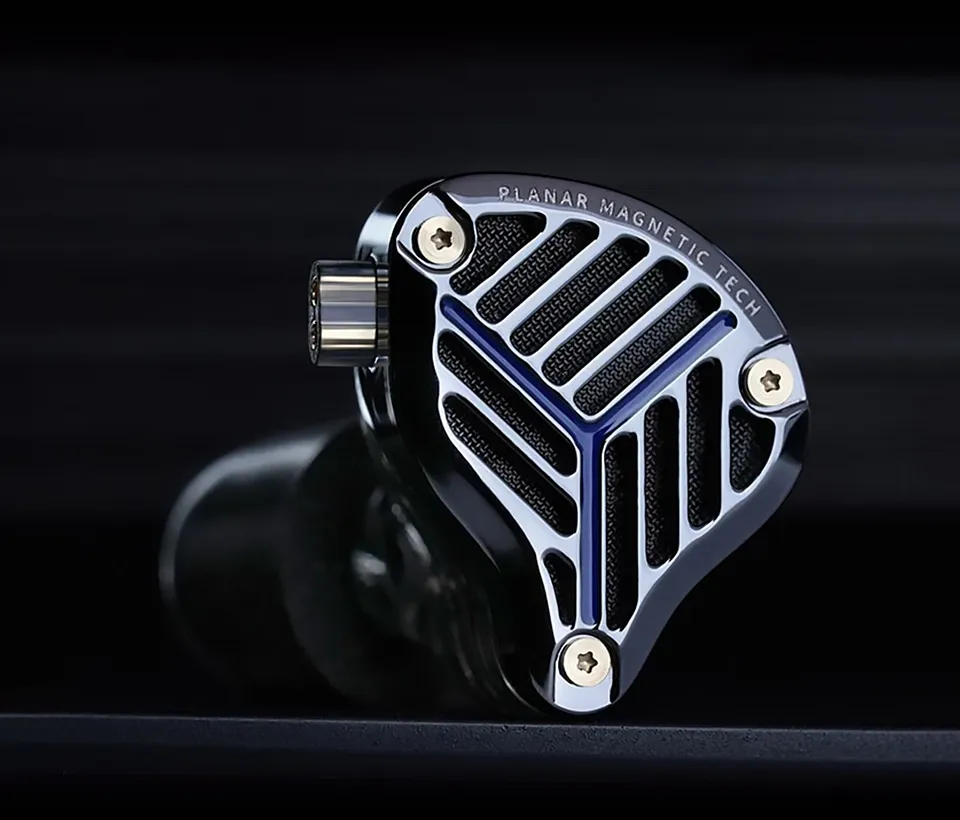Project Metavs.PRX
Sound & Specs Comparison
Information
Both IEMs are widely regarded in the audiophile community. See how they differ in terms of sub-bass response, upper mids, clarity, and overall tonality. Spider charts and rating breakdowns included.
Objective Comparison
Facts, details, stuff.
| General Info | Project Meta | PRX |
|---|---|---|
| Brand | CrinEar | KZ Earphones |
| Country | – | China |
| IEM Description | A debut IEM by Crinacle's CrinEar: a compact, full-aluminum flagship tuned to a “tilted Diffuse Field + bass boost” curve. Delivers vibrant mids, warm sub-bass, and clear treble—crafted for musical accuracy and comfort. | The KZ PRX is the brand’s first true fourth‑generation planar‑diaphragm IEM, engineered around a 14‑magnet matrix and an ultra‑thin, silver‑galvanized membrane for unparalleled high‑ and ultra‑high‑frequency extension (up to 40 kHz) with minimal distortion. Housed in a rugged alloy shell and paired with a detachable silver‑plated OFC cable and memory‑foam tips, it delivers precision tuning, a wide soundstage, and lasting comfort. Ergonomic curves and eco‑friendly packaging underscore KZ’s commitment to both craftsmanship and sustainability. |
| Price Level | 100 – 500 | < 100 |
| Housing & Driver | ||
|---|---|---|
| Driver Config | – | Planar Magnetic |
| Driver Types | – | Planar Magnetic Driver |
| Shell Material | – | – |
| Cable | – | – |
| Technical | ||
|---|---|---|
| Freq Range | – | – |
| Impedance (Ω) | – | – |
| Sensitivity (dB) | – | – |
| Crossover | – | – |
| Platform Info | ||
|---|---|---|
| Comments | 0 | 0 |
| Visit Count | 96 | 74 |
| External Reviews | 1 | 1 |
Meta Ratings
// Nothing to compare yet.
Sound Characteristics
PRX offers a stronger and more impactful bass response, adding weight and presence where Project Meta feels less assertive (6.5 vs 6). Project Meta adds s more body and slam to bass hits, which makes it feel more physical than PRX (6.5 vs 6). PRX renders lower mids a more naturally, giving male vocals and instruments a fuller tone than Project Meta (7 vs 6.5). Upper mids are s more resolving and expressive on It, revealing emotion and articulation better than Project Meta (7.5 vs 5.5). The treble on It is a more nuanced and refined, especially when it comes to cymbals and ambient elements (8.5 vs 7.5). The highest frequencies on It feel a more natural and less rolled-off compared to Project Meta (8.5 vs 6.5). It creates a m wider soundstage, giving instruments more space and a better sense of placement than Project Meta (8 vs 6). It extracts low-level details a more effectively, helping subtle nuances emerge clearer than on Project Meta (8.5 vs 6). In complex arrangements, It separates layers a more distinctly, preventing overlap that Project Meta occasionally suffers (8 vs 6.5). It keeps competing frequencies under control a more effectively, reducing sonic congestion compared to Project Meta (8 vs 5.5). Notes played through It feel a weightier and fuller, giving a more satisfying impact than those from Project Meta (6.5 vs 6). It delivers n stronger slam and physicality, making drums and transients hit harder than Project Meta (7 vs 6). It handles sibilant sounds a more gently, with fewer peaks and less sharpness than Project Meta (7.5 vs 6.5). The grain and surface of instruments are rendered a more vividly by It, while Project Meta feels flatter (7 vs 5.5).
| Project Meta | PRX | |
|---|---|---|
| Sub Bass | 6.0 | 6.0 |
| Bass | 6.0 | 6.5 |
| Bass Feel | 6.5 | 6.0 |
| Lower Mids | 6.5 | 7.0 |
| Upper Mids | 5.5 | 7.5 |
| Lower Treble | 7.5 | 8.5 |
| Upper Treble | 6.5 | 8.5 |
| Sound Stage Width | 6.0 | 8.0 |
| Detail | 6.0 | 8.5 |
| Layering | 6.5 | 8.0 |
| Masking | 5.5 | 8.0 |
| Note Weight | 6.0 | 6.5 |
| Slam | 6.0 | 7.0 |
| Sibilance | 6.5 | 7.5 |
| Timbre Color | 6.0 | 6.0 |
| Tonality | 6.0 | 6.0 |
| Texture | 5.5 | 7.0 |
Tonal Signature
// Nothing to compare yet.

